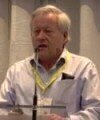Using Observations to Understand Regional Methane Budgets
If you'd like a survey of atmospheric methane at the level of individual cities, click to reveal a more relevant e-Learning. Similarly, for a broader perspective on the identification and validation of methane sources, follow the link.
There is a growing need for comparisons between emission estimates produced using bottom-up and top-down techniques at high spatial resolution. In response to this, a proof of concept study has been performed in which developed an inversion approach to estimate methane emissions for a region (East Anglia) in the South East of the UK (˜100 x 150 km) at high spatial resolution. We present results covering a 1-year period (June 2013 - May 2014) in which atmospheric methane concentrations were recorded at 1-2 minute time-steps at four locations within the region of interest. Precise measurements were obtained using gas chromatography with flame ionisation detection (GC-FID) at three of the sites; the fourth used a PICARRO Cavity Ring-Down Spectrometer (CRDS). These observations, coupled with the UK Met Office's Lagrangian particle dispersion model, NAME, were used within the InTEM inversion system to produce the methane emission fields. Realistic emissions estimates counties in East Anglia were produced, which compare well with those of the UK National Atmospheric Emissions Inventory (NAEI).
In parallel a study of hot-spot emissions from a landfill near Cambridge was conducted with reasonable agreement being found emission estimates using the WindTrax dispersion model, a Gaussian Plume model and the NAME InTEM approach described above. The estimated emissions from the three approaches were consistent within the associated uncertainties. Using the Gaussian plume analysis of 3 years of measurements, we found strong evidence for a seasonal cycle in methane emissions from the landfill with more being emitted in winter than in summer. We suggest that this occurs as a result of more active methanogenic bacteria in the surface layer of the landfill in the warmer summer months, indicating that further activation of the surface layer could lead to reduced methane emissions. Further, the location of the landfill was identifiable in the regional analysis, though large uncertainties were associated with the emission estimate. We think that these uncertainties can be reduced, e.g. by using Bayesian approaches in which hot-spot locations are included based on known landfill sites, etc. At the very least, the regional analysis can identify high emitting point sources which can then be subjected to further study using the new, lower cost sensors which are becoming available. This technique would be lower cost and more easily deployable and so is suitable for on-going monitoring of point sources.
Free to watch
Sessions are free to watch. Please login to view this session or create an account.
Speakers

Neil Harris (Cranfield University)
Digital Edition
PIN 25.4 Aug/Sept
September 2024
Analytical Instrumentation - Novel and Rapid LSC method for the analysis of biogenic carbon in fuels Measurement and Testing - Matrix evaluation on the Xplorer-V with Vectra autosampler accordi...
View all digital editions
Events
Nov 04 2024 Abu Dhabi, UAE
Nov 04 2024 Kigali, Rwanda
Nov 05 2024 Toronto, Canada
Nov 05 2024 Paris, France
Nov 12 2024 Cologne, Germany














